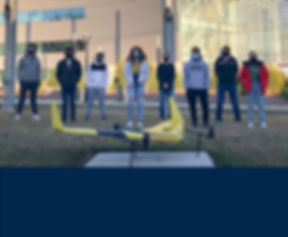


WHO WE ARE
Pushing forward by moving upward, together
MVFT was founded in February 2018 at the University of Michigan to enable students to gain first-hand experience with Urban Air Mobility (UAM) and electric vertical take-off and landing (eVTOL) technologies. With the help of faculty and graduate advisors, we design, build, and fly sub-scale aircraft. We believe that UAM is the next step for urban and regional transportation, and MVFT gives students an opportunity to gain experience in this developing industry. This doesn't mean just us at the University of Michigan - we want to get other schools involved as well. This is why we helped create the Vertical Flight Society Design-Build-Vertical Flight Competition in 2020. By establishing a platform where student teams across the world can compete with their aircrafts, we can foster an environment that will better prepare students to drive this industry forward and make their dreams a reality.
